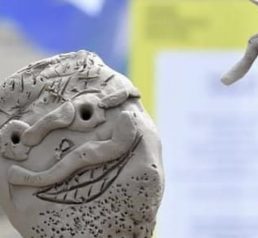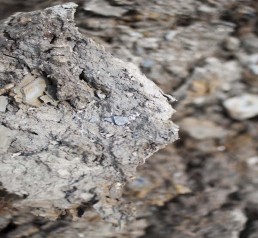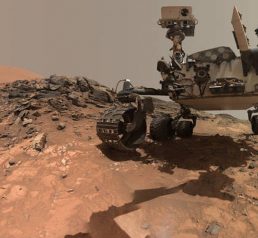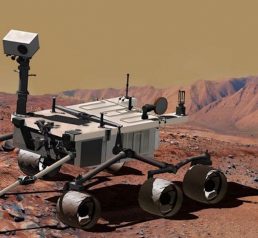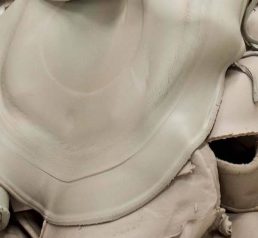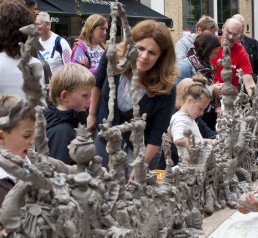Latest from our Martian clay expert, Javier Cuadros
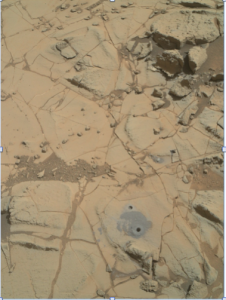
Javier Cuadros, Clay mineralogy researcher, writes occasional pieces for Clayground to update us on progress in the search for life on Mars. If it existed, traces are most likely to be found in clay. And those traces have a chance of being found through the amazing engineering and research collaboration that is Curiosity, the rover currently exploring Mars.
“Curiosity is now starting to climb Mount Sharp on Mars, the enormous mountain at the centre of Gale Crater, where it landed 3 years ago. Since then, the rover has been checking and testing all its equipment, having a look around, taking many data of the atmospheric conditions, investigating the most interesting rocks and moving slowly towards and up Mount Sharp. The main goal of the mission is to test for past habitability: conditions that may have allowed the development of life. Clay is a very good lead for that because it points to the existence of water in ancient times, and because remains of life are best preserved in clay. So Curiosity always keeps an eye on anything that looks like clay.
There was no advance news there was clay at the bottom of Gale crater, but Curiosity found it and, sure enough, there was a stop to study the rock carefully. The rover drilled, took a sample of the soil (similar to that shown in the picture), put it inside one of its apparatuses and investigated the minerals using X-rays as well as the chemical composition of these minerals. It took two or three days to go through this operation because Curiosity uses certain equipment only at night, when it cannot do other operations that involve moving around, and because the measurements were long. The result was that the samples contained clay, yes, and precisely of the type that Javier, our scientific clay correspondent, and his colleague Joe have been studying these recent years: clay rich in magnesium and iron. Comparing the clay-containing soil and the hard rock that probably originated it, the scientists have been able to conclude that this was probably a lake and that the amount of water flushed through the lake was not very large: an ephemeral lake with water only at intervals, perhaps.
In their investigation, Javier and Joe have been using clay of similar composition collected from the bottom of the ocean to have a detailed description of it and be able to get a lot more out of the information that Curiosity and the satellites orbiting Mars send to Earth. They have come up with a way of telling, from remote sensing data only, how much magnesium and iron there is in these clays, how the atoms are arranged in the clay structure and what are the likely environments where they may have formed. Javier and Joe have also found that the range of possible clays on Mars is greater that it was thought. Talc (as in talcum powder) is a very good candidate.
The finding of clay at the bottom of Gale crater is good news because it indicates that there is more clay out there (on Mars) than the remote sensing data indicate. We can expect new discoveries also all along the ascension of Mount Sharp. It is very good news in particular for Javier and Joe, who find their own study linking directly with the findings of Curiosity. Because the rover can perform analyses of the soils, very similar to those that Javier and Joe carry out in the laboratory, the comparison between the Martian and Earth results is very accurate. This is the closest we can get for now to study samples from the Martian soil in our Earth labs.”
-
Pandemic clay action!
18th Aug 21
-
The Volcano and the Microbes: interaction between geology and biology
4th Jun 21
-
Perseverance: a new NASA rover continues to follow Martian clay
2nd Aug 20
-
Research into clay provides clues as to how much water there was on Mars
18th Sep 19
-
22 Hands: British Ceramics Biennial Commission
12th Aug 19
-
Clayground Summer Events
24th Jun 19
-
Colourful Clays on Mars
20th Feb 19
Thames foreshore fragments and visual references
4th Dec 12
How is clay formed? Is it inorganic or organic?
10th Sep 12
CLAY FROM AROUND THE WORLD
3rd Aug 11
Clay Cargo 2014 Collection: the Thames Foreshore
15th Dec 14
Clues to life on Mars likely to be found in clays, Javier Cuadros
5th Aug 16
Clay Cargo 2013-2015
15th Jun 15
Sessions on the Clay Cargo boat, hosted by Fordham Gallery
9th Mar 15
Civic Spaces, Exhibitions
Museums and Galleries, Regeneration
Maker spaces, Rural Sites
Archaeology
Youth and Adult Community Groups, Professionals
Art Groups, Families, Students
Collaborations, Archaeology Sheets
Commissions, Thinking Hands? Research
Knowledge Exchange

